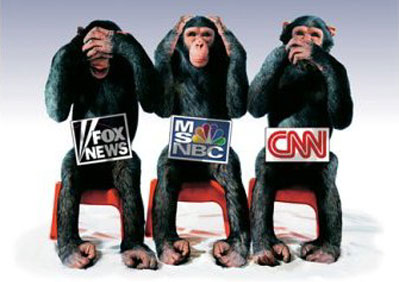
It has always been a huge deal when famous media/industry/corporations merge ownership or partnership. In
The New Media Giants, David Croteau and William Hoynes argue about the evolution of media and the affect it has on the public. The market perspective and the public sphere perspective introduce two different but very important concepts to keep in mind when analyzing media.
http://myportfolio.usc.edu/waca/DisneyTV.gif
This photo on the top left shares some examples of some of the major media companies Walt Disney owns.
From the market perspective, these media giants merging or selling out to another company can be "understood as the rational actions of media corporations attemping to maximize sales, create efficiencies in production, and position themselves strategically to face potential competitors" (22). The growth and evolution of media conglomerates is unstoppable and to this day it is expanding to include everything from radio, television, to computer games, CD's, movies, the Internet etc. These multiple revenue generates from this expansion. With so many big media players buying out other big media players, more and more corporations are owning a vast majority of media. It is scary in a way because no one thinks to know that Disney owns almost everything from the Disney channel to ABC family to Lifetime to ESPN to SOAP etc. The list goes on vertically and horizontally allowing Disney (for example) to own many different types of media products as well as a variety of ways of distribution, production, and exhibition of their product(s). The digital platform "encompasses all forms of media" making it easier "for companies to create and promote their different products" (33).
The public sphere perspective ties with what has been mentioned concerning the market perspective. As said before, big media companies buying out other big media companies is seen to act as beneficial to the companies and its success. However, from the public sphere perspective, "growth in the number of media outlets does not necessarily ensure co

ntent that serves public interest" (22). In other words, when there is a vast majority of media or a high selection of different forms and genres of media, the public have choices of different media to choose from depending on interest, mood etc. People associate with whatever media attracts them because they find an interest in it. If Disney, for example, were to own every single possible form of media in this world, the diversity of expression will lack because of the dominance of one particular outlet. It would leave out so much if Disney ruled the world.
As a result of this merging phase, so many more channels have been created (added) and new forms of media have been developed, allowing people to watch their favorite shows on the computer instead of the tv, or listen to their favorite songs on youtube instead of the radio or i-pod for example. However, Croteau and Hoynes point out that "more content does not necessarily mean
different content" (29). This method is not the only one out there to make big media giants successful. The idea of globalization is another strategy media conglomerates follow to maintain success. The outside countries actually have a huge affect on big media corporations. These companies rely on the interest of other countries and keep in mind how their products will sell outside of the United States. This demonstrates that media companies (very few big giants) "dominate the entire (global) mass communication industry" (36). With that said, much of our media not only shapes our perspectives but outside countries' perspectives. Our cultures, although very different, share the affect of the media's influence to our lifestyles.
http://www.michaelbarrier.com/Home%20Page/Disney-war.jpg
I personally thought this picture was interesting. I suggested what if all of media was controlled by Disney and this picture demonstrates that imagined idea perfectly.

































